"[gallery link="file"] Each August legions of the speed obsessed are drawn to the incredible environment of high salt flats of Northern Utah for Bonneville speed week. The Bonneville Salt Flats, the venue for the historic event, is a salt "

To the ends of the earth – Pub 2 Pub in a TVR
A great roadtrip proves that life is all about the journey
Car culture can be found in the most unlikely of places.
Deep in the Ecuadorian jungle, for instance, where automotive adventurer Ben Coombs found himself gate-crashing a gathering of the local car club, dedicated to Nismo-inspired Datsun pickup trucks. Or another 3,000 miles further south in the Chilean capital of Santiago where he would end up being invited to a private supercar collection, which was home to a £1.5 million Aston Martin One-77. Two things unite these experiences: Firstly, they’re based on a shared love of cars that transcends wealth, culture and national boundaries. Secondly, as a general rule, you are equally unlikely to pull up at either and find an Englishman in a bright green TVR.
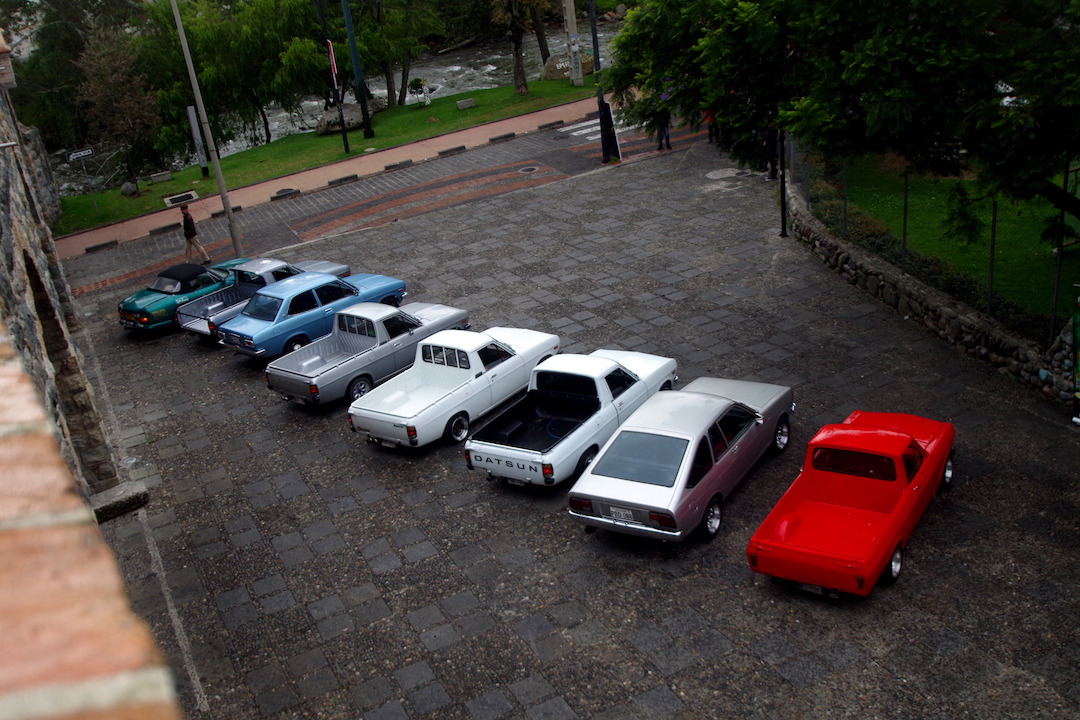
Except, here the normal rules don’t apply. Normal people don’t decide to drive 27,000 miles from the world’s most northerly pub, on the Arctic island of Svalbard, to its most southerly in Tierra del Fuego. They don’t set off on an eight-month expedition across the world. And they certainly don’t chose to do so in a TVR.
Ben is defiant about his choice of vehicle, however: “There’s a real satisfaction in doing a journey like this in a car that wasn’t really designed for it. Plus, it’s a lot more practical than most people would imagine. If you compare it to a Land Rover, which weighs twice as much, the TVR puts half as much load through the suspension and half as much strain through the engine. So there is a sort of logic at work.”
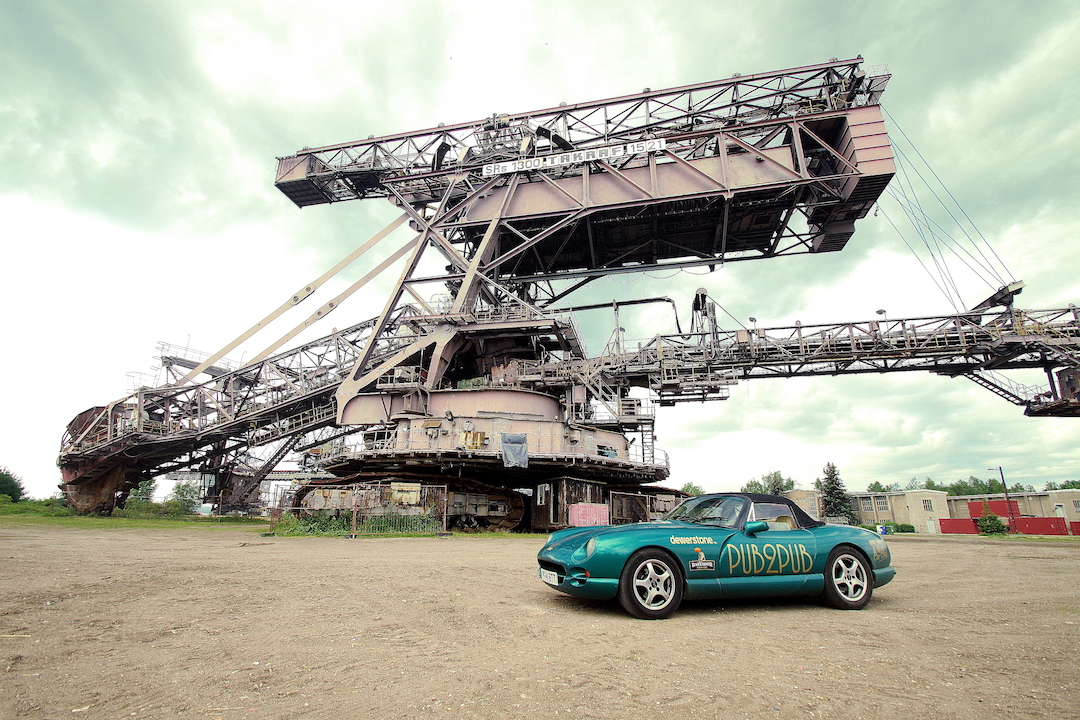
That might sound like wishful thinking, but Ben is more-than-averagely qualified to comment. In 2006 he drove to Mongolia in a diminutive 998cc Mini as part of the Mongol Rally. Next, he drove a Porsche 944 down the length of Africa to Cape Town, followed by a trip from the UK to Vietnam in a C4 Corvette (accompanied by a friend in a Rolls Royce Silver Shadow II).

Almost as soon as Ben returned from the aptly-named V8Nam expedition he set about looking for the next challenge. And it didn’t take long to find one, he explains: “I’d always wanted an excuse to visit Latin America. We were sat in a pub on Dartmoor trying to think of a suitable theme and that was when the idea of Pub2Pub came about.”
The original plan was to find a Cobra replica to take on the trip, but with the clock ticking, Ben decided to use his TVR. Up until that point, Kermit – as the bright green 1997 Chimaera 400 is known – had been a weekend toy, covering a relatively pampered 2,000-or-so miles a year. Various ideas for modifications were discussed, including raised suspension and even a roof tent, but eventually the decision was taken to simply give the car a thorough service and keep it standard.
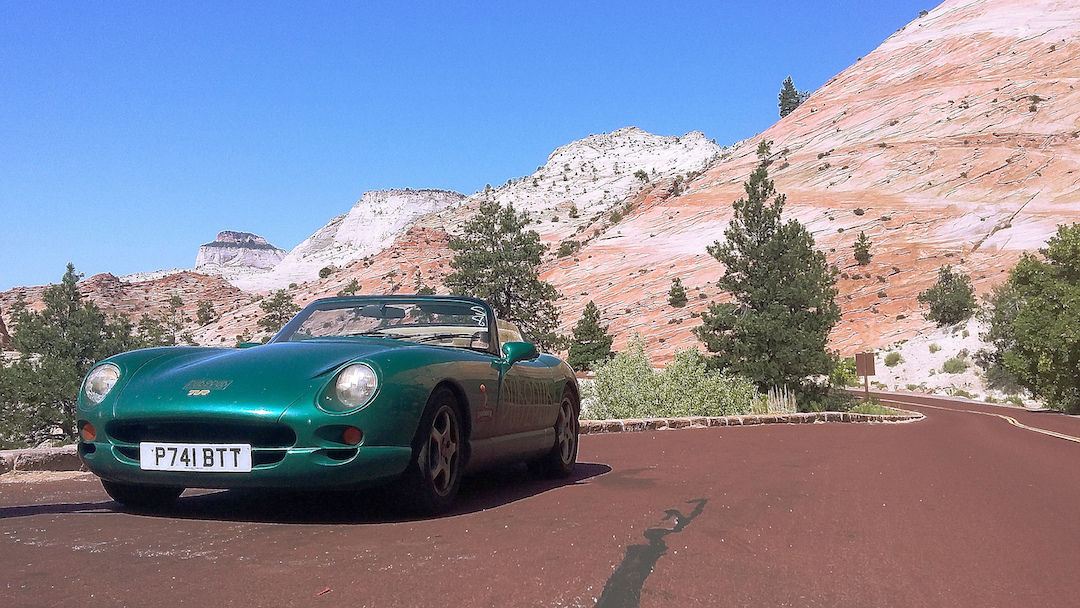
“We did have a few moments where the paved road just suddenly ended, but that was usually due to navigational errors on our part,” he comments. “The biggest driving obstacles we generally faced were speed bumps. They’re very popular in Central America and they seem to be a lot bigger over there.”
The trip more or less planned itself, he recalls. Having driven down from Norway, the easiest way to cross the Atlantic was to return to the UK and load the car on a boat from Southampton to New York. The route was then shaped by points of interest along the way, such as the Appalachian Mountains, the deserts of Utah and a total solar eclipse that was due to take place in Tennessee. Next, it was on to central and southern America.
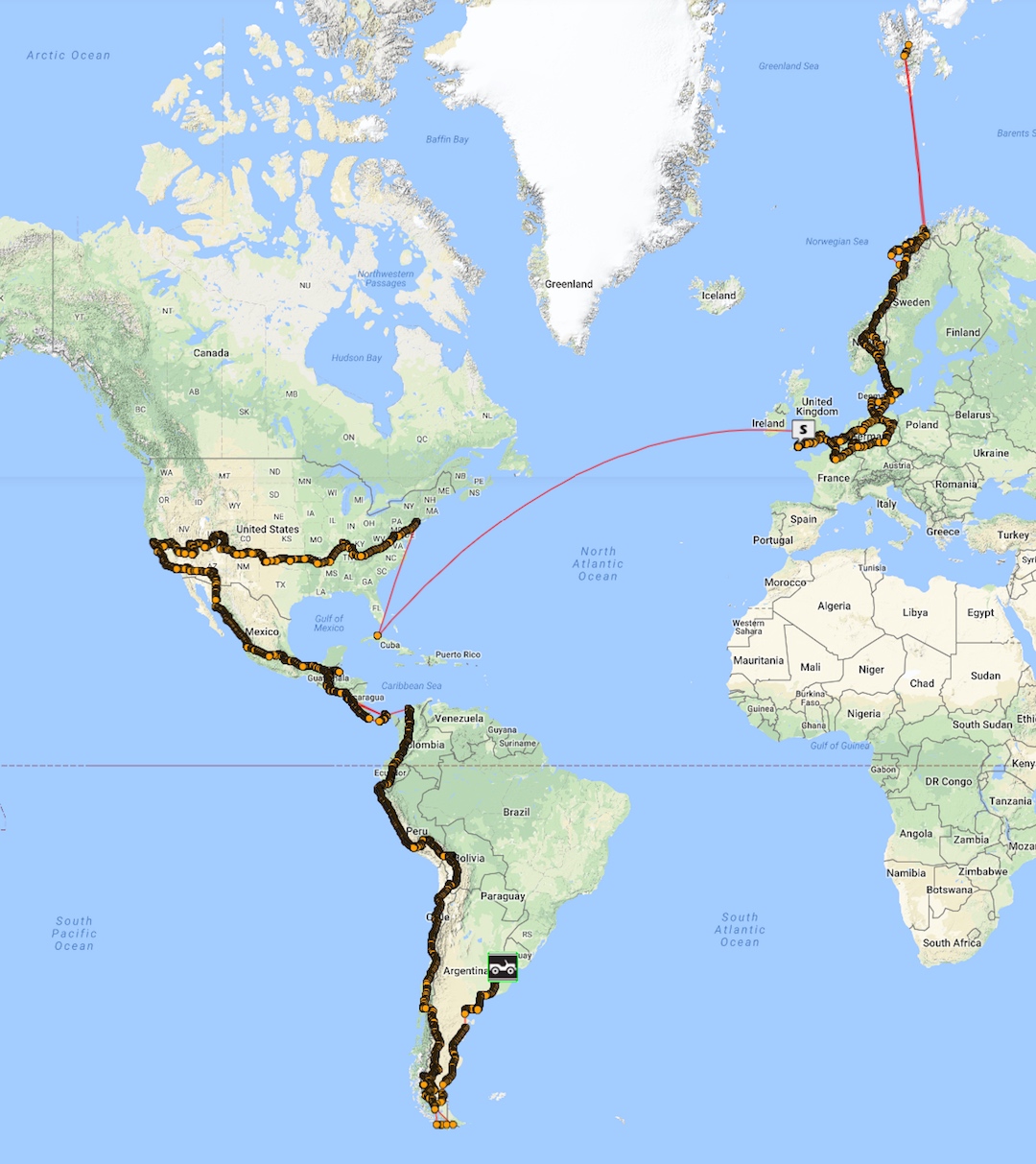
Where the surface meets the sky
Two of the standout moments from the trip were driving the Death Road near La Paz [made famous by Top Gear] and the Salar de Uyuni salt flats, he explains: “These days the Death Road has been bypassed, so it’s not nearly as scary as it appears on TV. We only saw four or five cars in the whole time. It’s a spectacular road, descending something like 3,400 metres over the course of 40km – most of it on gravel in dense rainforest.”
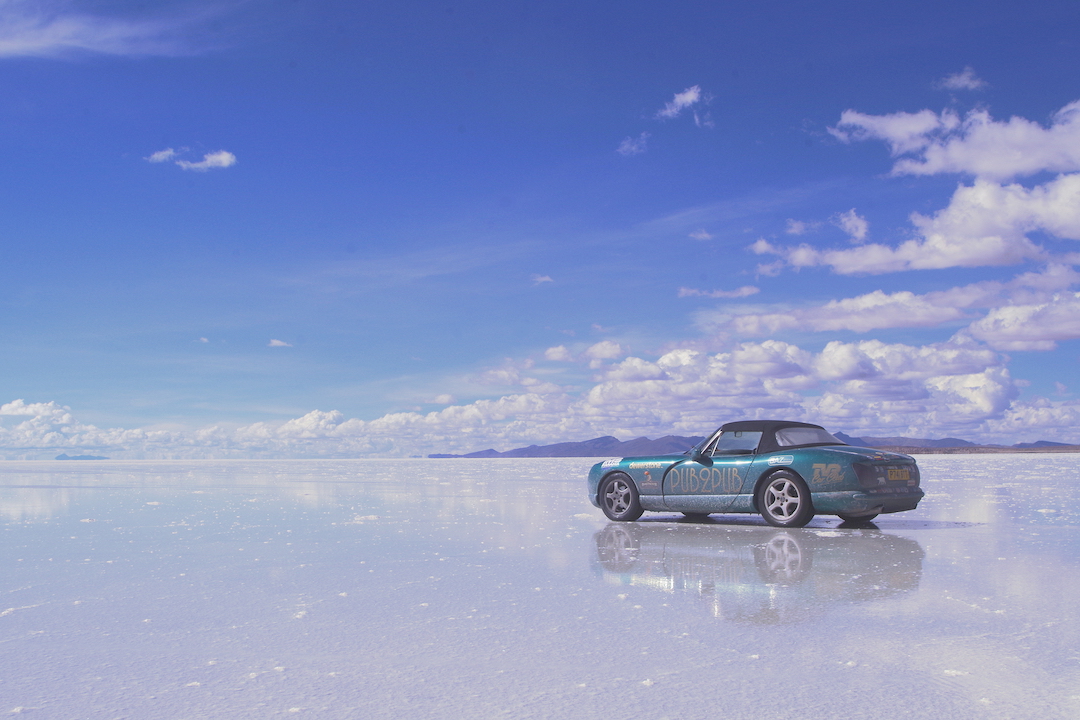
The salt flats were an altogether different spectacle, with an area the size of Northern Ireland flooded, creating a vast natural mirror: “It was pretty traumatic getting a low-slung sports car onto the salt flats, but once we were there the sensation of driving in a world where there’s no horizon and the surface is simply a reflection of the sky was utterly surreal. It was the prospect of moments like that which made me want to do the trip.”
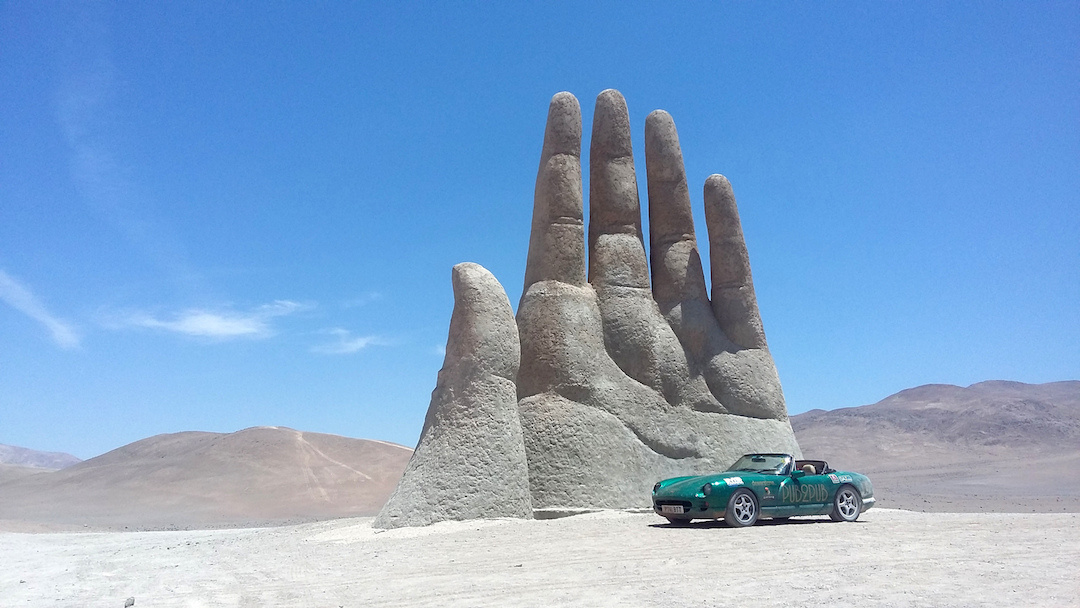
The standard reaction from TVR owners is shock at the prospect of subjecting the Chimaera’s notoriously rust-prone chassis outriggers to what is essentially a giant salt bath. But Ben remains philosophical. “You have to come to terms with the fact that you’re risking the car the whole way on a trip like this,” he says. “The first thing I did when I got off the salt flats was to spend an hour with a pressure washer, hosing all the salt off.”
Another memorable experience came while driving through Ecuador, he recounts: “We drove over the crest of a hill and the Cotopaxi volcano suddenly just appeared in front of us. It was during the New Year celebrations and a group of local people were wandering down the road in fancy dress. They started dancing around the car while the volcano was smoking in the dusk. It was one of the most surreal moments of my life.”
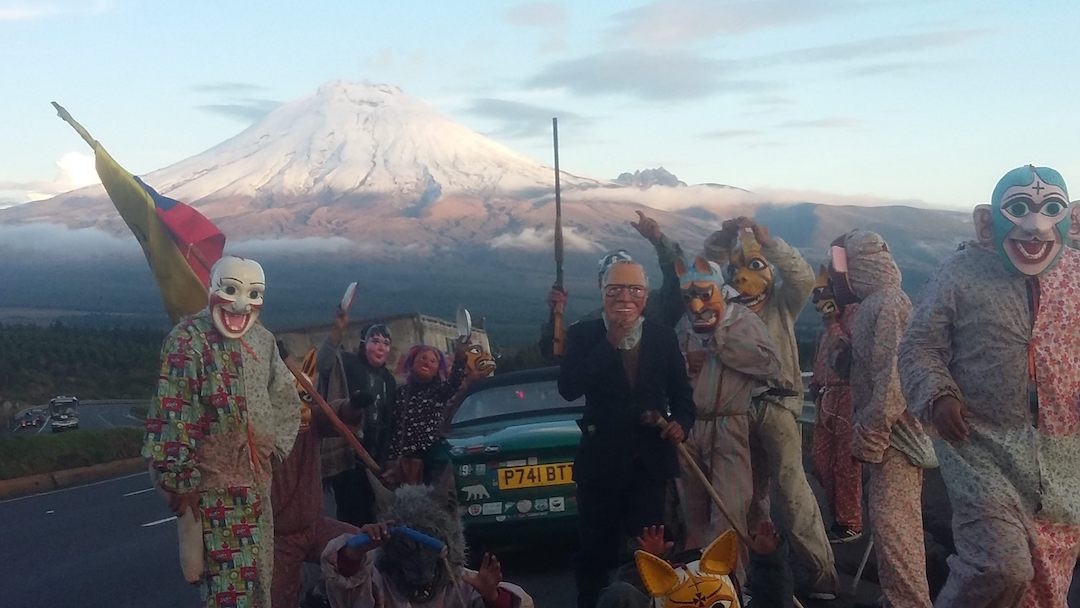
Kermit proved a hit with car enthusiasts throughout the trip. Somewhat to his surprise, Ben found that the TVR brand was generally recognised, even though very few people had ever seen one in the flesh. “You wouldn’t expect people to know what a TVR was in the middle of Latin America, but a lot of them had come across the name in Top Gear repeats on YouTube or through playing things like Gran Turismo,” he notes. “The reception we got was generally really positive.”
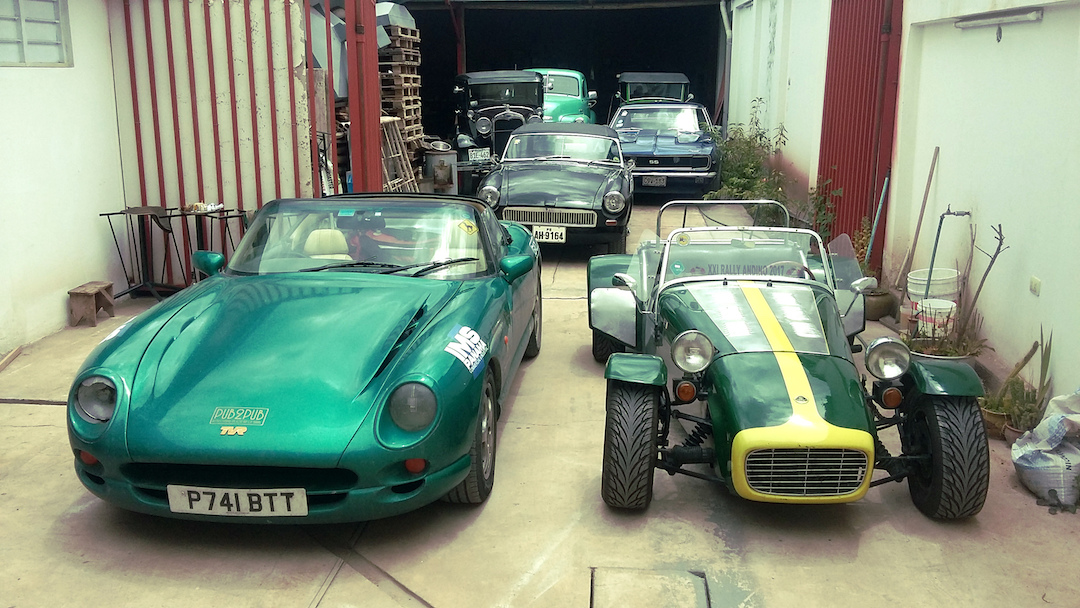
There were a few exceptions. At a police checkpoint in Argentina the authorities announced they were going to impound the car due to a cracked headlight lens. Ben dug his heels in and 30 minutes later he was released. On another occasion, a truck had to be arranged to take Kermit across Costa Rica, where right-hand drive vehicles are banned. When the flatbed finally arrived it was missing the appropriate paperwork, so Ben ended up stuck between the Costa Rican and Nicaraguan borders for a week until a replacement truck could be found to take him to Panama. There he got refused entry again, but an hour later the border guards received a call from the country’s vice president who apparently had friends following the trip. He suggested that the guards might like to let Ben in; needless to say, the request was granted.
The last pub on earth
Two and a bit months later the road ran out at the end of continental America. Ben bid a temporary goodbye to Kermit and took a boat for the remaining 250 miles to Puerto Williams on the Chilean island of Navarino. It was here that he found the last pub on earth.
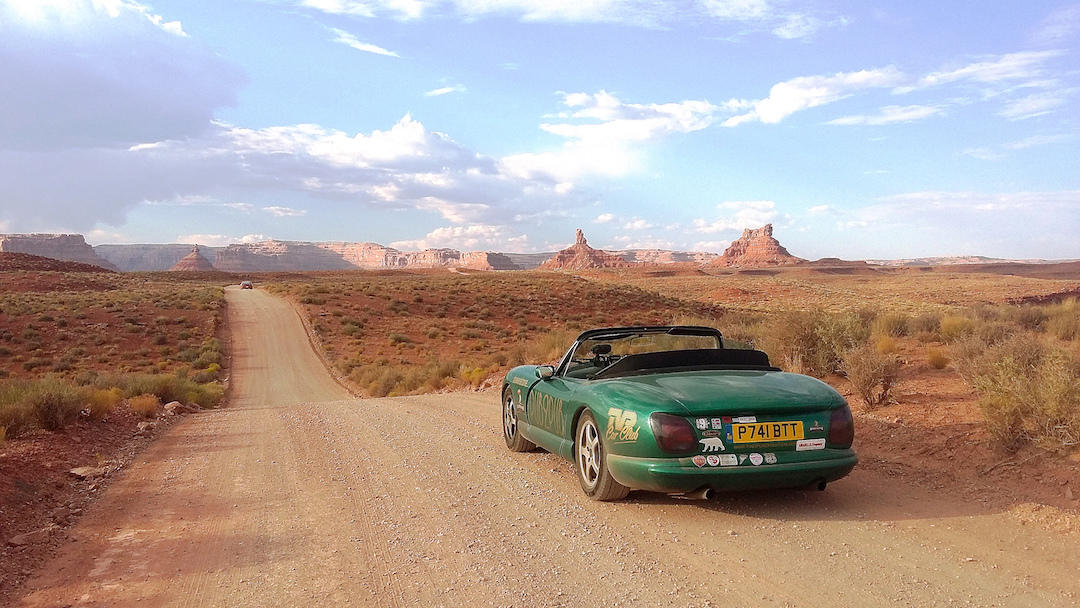
“It was quite strange to reach the finish. I walked into the pub and it turned out to be a complete and utter dive with plastic patio furniture and Chilean line dancing on the TV,” he explains. “There were just two locals sat at the bar and my Spanish wasn’t good enough to tell them about the trip, so I ordered the one type of beer they had behind the bar and felt a bit awkward sitting there. I wouldn’t say it was an anti-climax, but it was a very random experience.”
Before long the story had gone viral. In the first eight hours, one and a half million people read the account of Ben’s trip on the BBC News website. It made headlines as far afield as India. Suddenly, the car was being recognised as he drove back through the middle of rural Argentina. It had become almost certainly the most famous Chimaera in existence.
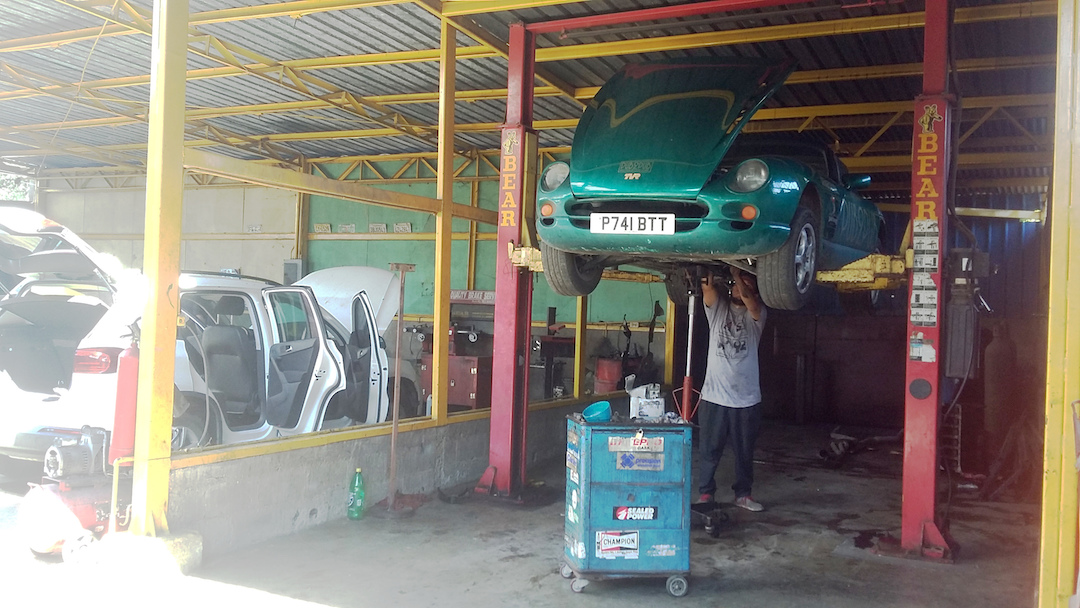
Being a TVR, of course, the one question that gets asked repeatedly is ‘did it breakdown?’ The answer basically is no, although the original clutch did begin to deteriorate at around 70,000 miles and ended up being replaced at a Land Rover garage in Nicaragua. (“They looked a bit perplexed until I lifted the bonnet and they saw the Rover V8,” Ben notes.)
“The TVR has actually been the most reliable car I’ve used for one of these trips,” he says. “The Porsche was a more relaxed place to rack up the miles, but the TVR had more sense of occasion. The Corvette was somewhere in between the two, which either makes it the best combination or something of a compromise depending on your perspective.”
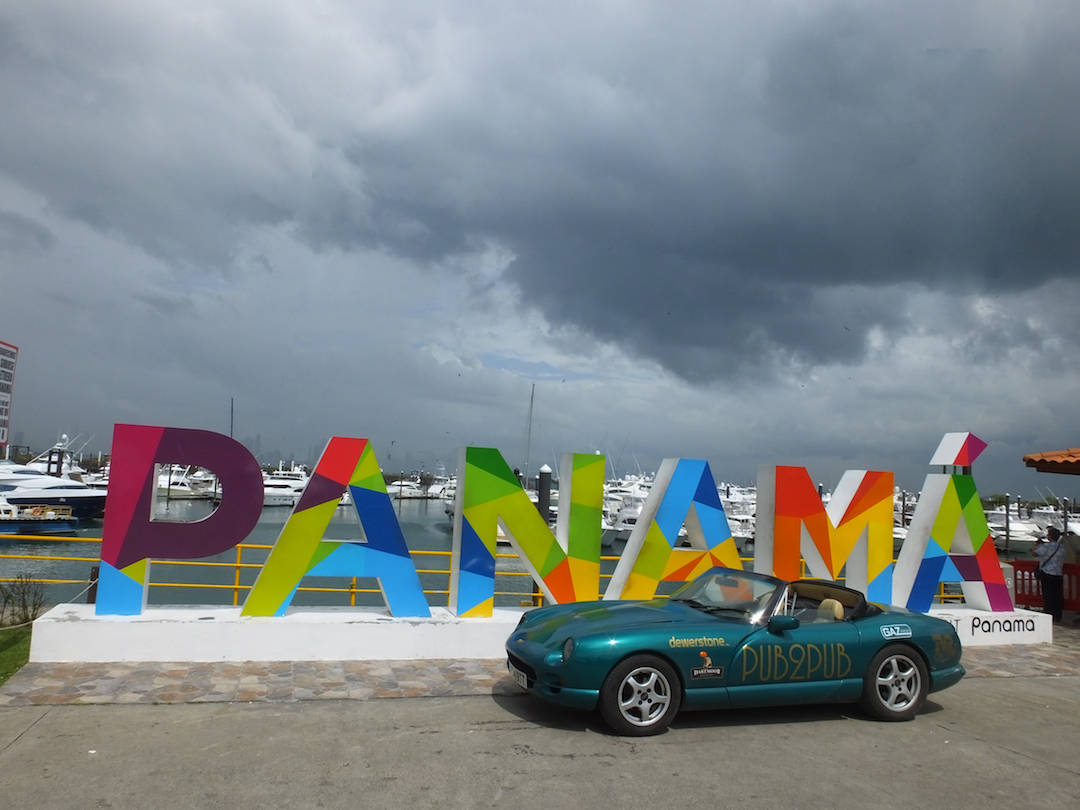
So how do you top a journey like this? Ben’s current focus is on his new company, Pub2Pub Adventures, which aims to give ordinary petrolheads a taste of the overland experience. He does have a couple of ideas for his own automotive exploits, however, one of which comes up in conversation. We’re sworn to secrecy, but suffice to say it’s the sort of madcap scheme that any one of us might dream up over a pint, without any likelihood of actually seeing it through.
Given Ben’s track record, however, we rather suspect he will.
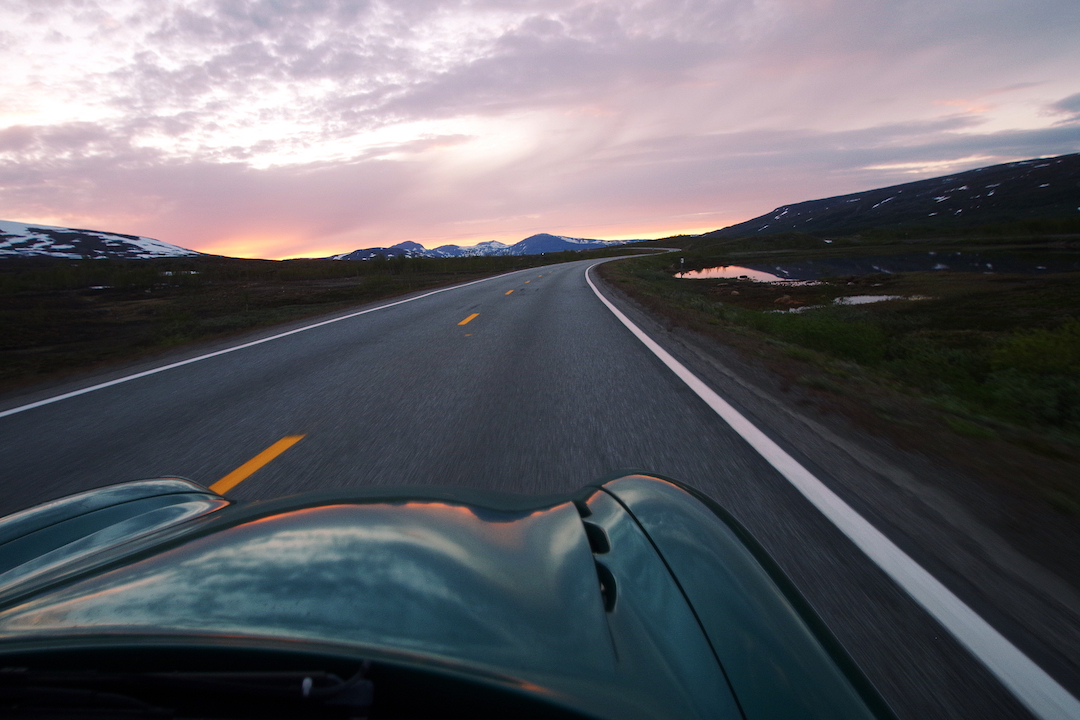
CLICK TO ENLARGE









